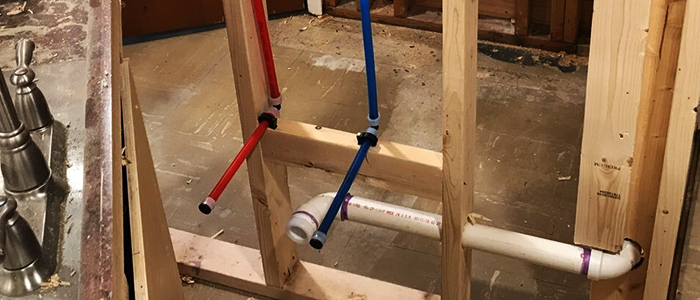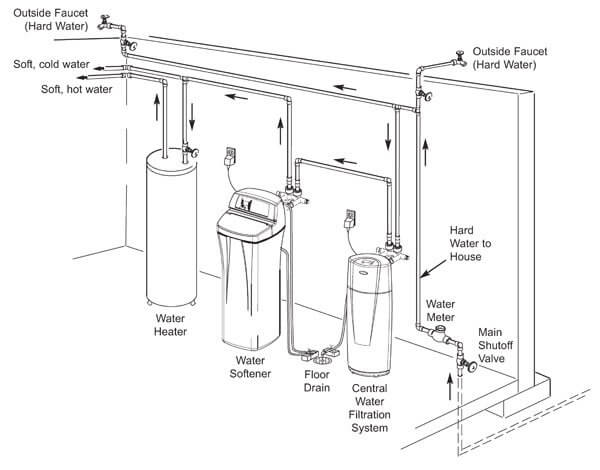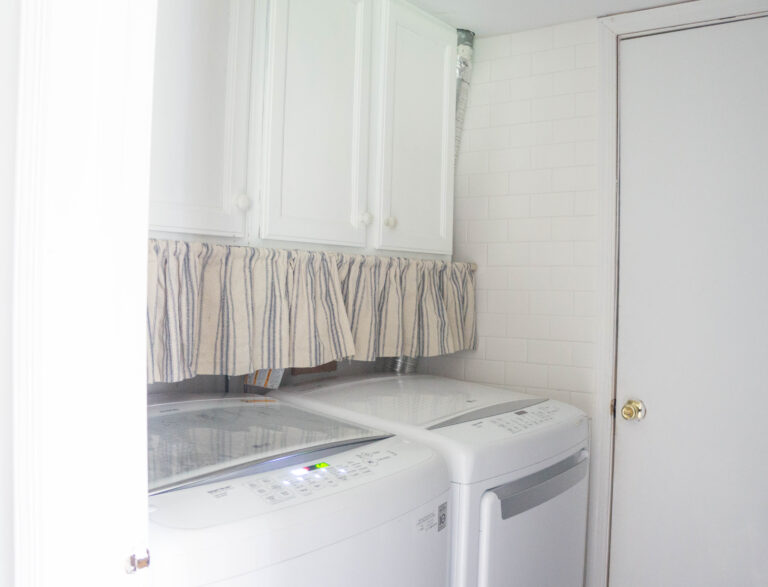What Does Rough In Plumbing Mean?
Rough in plumbing is the process of installing the pipes and fixtures of a plumbing system before the walls and floors are finished. It is the first step in the process of installing a plumbing system in a new building. The term “rough in” refers to the fact that the plumbing has not yet been connected to the water supply and drainage system and is not yet ready for use. Rough in plumbing involves laying out the pipes and fittings and connecting them to the main water supply and drainage lines. It also involves installing the necessary valves and fixtures such as toilets, faucets, and showers. The rough in process is an essential step in the installation of a plumbing system in a new building and is typically completed before the walls and floors are completed.
Definition of Rough In Plumbing
Rough in plumbing is the process of installing the basic plumbing system before the walls and floors are completed in a new construction. It involves installing the pipes, plumbing fixtures, and drains that will form the backbone of the home’s plumbing system. This includes running pipes for the sink, bathtub, toilet, and other fixtures, as well as connecting them to the main water line. Rough in plumbing should be done by a professional plumber with experience in the field in order to ensure that the system is properly installed and meets local building codes. Once it is complete, the walls and floors can be finished and the finishing touches can be added.
Benefits of Rough In Plumbing
Rough In Plumbing is one of the most important aspects of any plumbing system. It involves the installation of pipes and fixtures in a building before the walls, floors, and ceilings are covered. Benefits of rough in plumbing include improved accuracy, easier repairs, and a decrease in construction time. By installing the pipes before the walls are put in place, plumbers can ensure that everything is lined up correctly and correctly routed. This not only saves time, but it gives plumbers greater accuracy and makes it easier to repair problems in the future. Additionally, it helps save time on construction projects as fewer pipes need to be installed during the final stages of the project. With Rough In Plumbing, plumbers can make sure that your plumbing system is installed correctly and efficiently the first time.
Factors to Consider When Planning a Rough In Plumbing Installation
Planning a rough in plumbing installation can be a complicated task- and one that can have a significant impact on the final outcome of the installation. To ensure that your rough in plumbing installation is successful, there are several important factors to consider. First, it is important to determine the size of the rough in, as well as the type of pipes and fittings that will be used. Additionally, you should be aware of any local regulations or codes that may affect the installation, as well as any potential safety risks. Finally, it is important to accurately measure the space in which the plumbing will be installed in order to ensure that the pipes and fittings are installed properly. By considering these factors, you can ensure that your rough in plumbing installation is successful.

Common Rough In Plumbing Applications
Plumbing rough in is the process of installing the basic plumbing system for a home before the actual fixtures are installed. It typically involves the installation of water supply pipes, drain lines, and vent lines. Commonly used plumbing rough in applications include those for toilets, showers, bathtubs, sinks, and dishwashers. It is important to properly size and install these components to ensure that the plumbing system functions correctly and the fixtures are properly supported. A qualified plumber should be consulted for all plumbing rough in installations to ensure that the job is done correctly.
Common Mistakes When Installing Rough In Plumbing
Installing rough in plumbing is no small task. It requires careful planning and precise measurements. Unfortunately, even if you are experienced in plumbing, there are still common mistakes you can make during the installation process. These mistakes include not measuring the pipes correctly, not using the right equipment for the job, and not checking the pipes for leaks. Additionally, it is important to use the right type of fittings and connectors, and to make sure that all the pipes are properly secured. Finally, when installing the pipes, it is important to ensure that all of the pipes are properly sealed and insulated. Failing to do so can lead to water damage and other costly repairs. By taking the time to plan and measure correctly, you can ensure that your rough in plumbing installation goes smoothly and without any costly mistakes.
FAQs About the What Does Rough In Plumbing Mean?
1. What is rough-in plumbing?
Rough-in plumbing is the initial stage of the plumbing installation process that involves running pipes and fittings through the walls and floors of a structure before the actual fixtures are installed. This allows plumbers to ensure that all of the pipes are properly connected and sized for the fixtures that will be installed later.
2. What is included in rough-in plumbing?
Rough-in plumbing typically includes the installation of water supply lines, drain lines, vent lines, and other necessary piping that will be connected to the fixtures once they are installed. It may also include the installation of sewer lines, depending on the building’s layout.
3. Is rough-in plumbing the same as rough-in electrical work?
No, rough-in plumbing and rough-in electrical work are two separate processes. Rough-in electrical work involves running electrical wiring and conduit through the walls and ceilings of a structure, while rough-in plumbing involves the installation of pipes and fittings.
Conclusion
In conclusion, rough-in plumbing is the process of installing the basic plumbing infrastructure for a home or building before other finishes are installed. This includes the installation of water supply lines, drains, vents, and other essential components that will provide a source of clean water and remove wastewater. Rough-in plumbing is an essential step when constructing a new home or remodeling an existing one, and it can help ensure that all plumbing fixtures are properly installed and functioning correctly.







